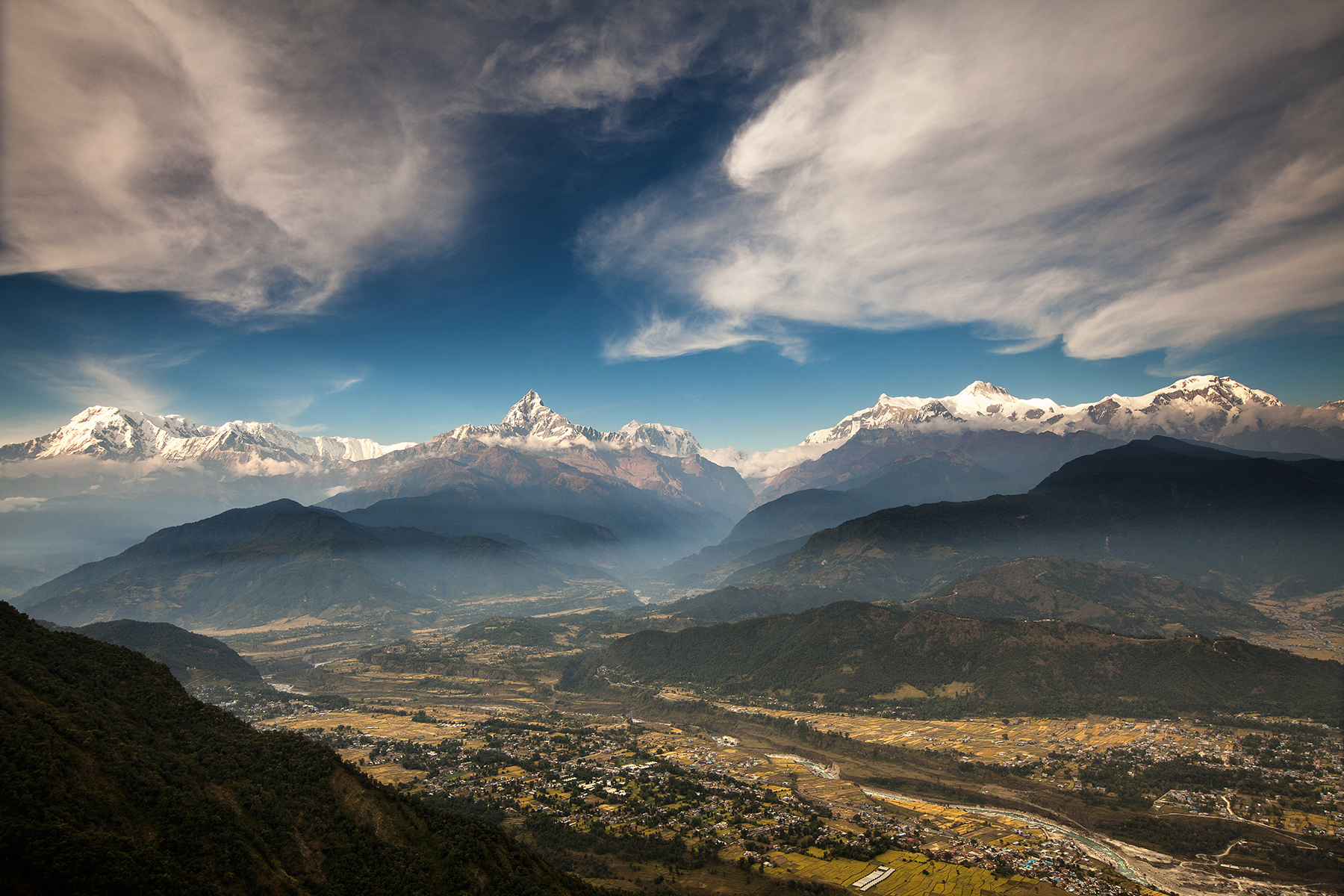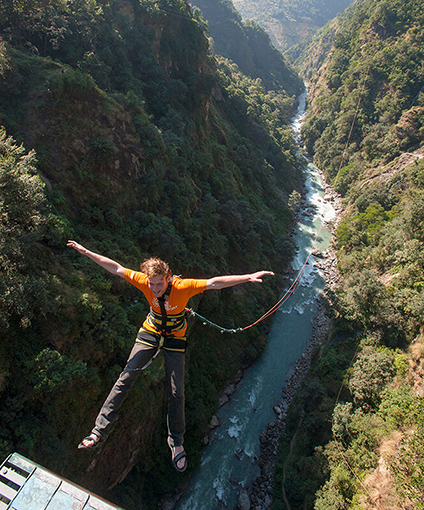The Himalayas, the ‘abode of snows’ extends from Assam in eastern India, west to Afghanistan. It is a chain of the highest and youngest mountains on earth and it encompasses a region of deep religious and cultural traditions and an amazing diversity of people.
Nepal is located in South Asia between China in the north and India in the south, east and west. While the total land area is 147,181 sq. km including water area of the country that is 3,830 sq. km. Nepal falls in the temperate zone north of the Tropic of Cancer.Nepal’s ecological zones run east to west about 800 km along its Himalayan axis, 150 to 250 km north to south, and is vertically intersected by the river systems. The country can be divided into three main geographical regions: Himalayan region, mid hill region and Terai region. The highest point in the country is Mt. Everest (8,848 m) while the lowest point is in the Terai plains of Kechana Kalan in Jhapa (60 m).
Customs and traditions differ from one part of Nepal to another. A conglomeration lies in capital city Kathmandu where cultures are blending to form a national identity. Kathmandu Valley has served as the country’s cultural metropolis since the unification of Nepal in the 18th Century. A prominent factor in a Nepali’s everyday life is religion. Adding color to the lives of Nepalis are festivals the year round which they celebrate with much pomp and joy. Food plays an important role in the celebration of these festivals. The diversity in Nepal in terms of ethnicity again makes room for various sets of customs. Most of these customs go back to the Hindu, Buddhist or other religious traditions.









